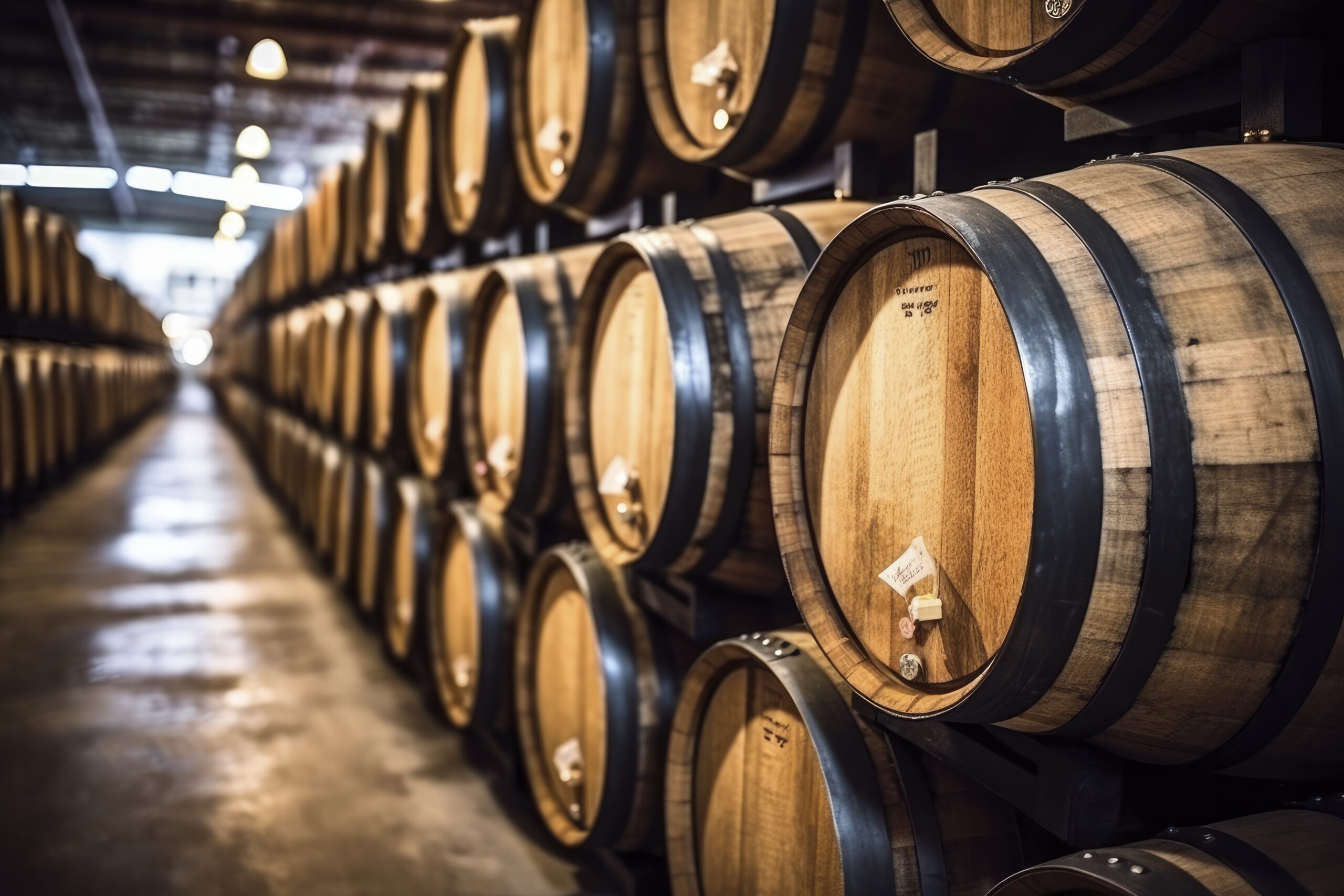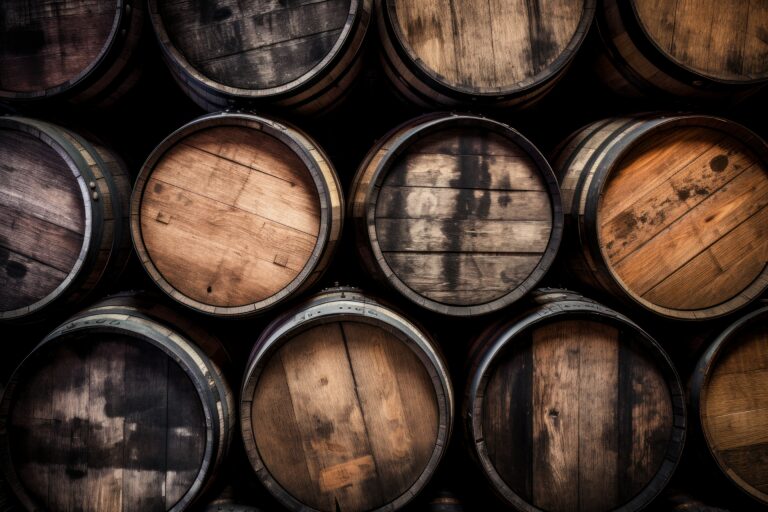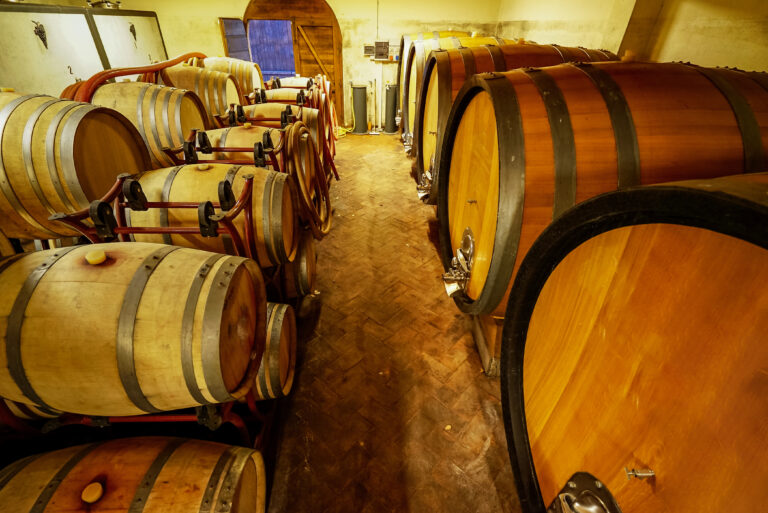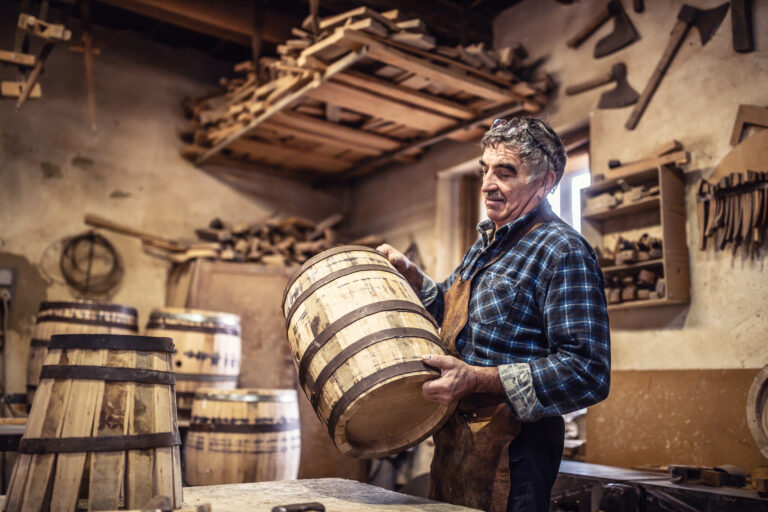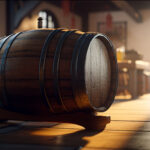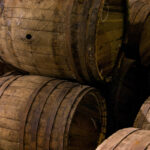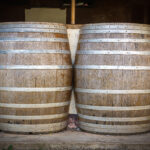Ever wonder how those stunning oak whiskey barrels maintain their handsome appearance after years of patiently aging precious spirits? You’ve likely seen the captivating photos – endless rows of whiskey barrels stacked with precision, their staves fitting snugly, hoops firmly in place, each radiating a warm, inviting amber glow. The truth is, preserving the integrity and visual appeal of these aging barrels requires diligent effort. Neglected barrels can succumb to drying, leading to unwelcome leaks, warping, and unsightly cracks. To combat this, master distillers employ specialized barrel management techniques, ensuring these crucial vessels remain in prime condition for continued whiskey aging while also presenting an aesthetically pleasing picture. In this exploration, we’ll delve into the meticulous ways distilleries monitor their barrels, maintain optimal moisture levels, skillfully repair minor damage, and discern when it’s respectfully time to retire a cask. While modern technology has introduced various barrel alternatives, the time-honored tradition of oak barrels remains the gold standard for producing the most exquisite aged spirits. With consistent care and maintenance, these wooden barrels can enjoy remarkably long and productive lives. So, pour yourself a dram of your favorite whisky and let’s uncover the secrets of how distillers keep their barrels in impeccable shape.
The Enduring Appeal of Whiskey Barrels for Rustic Decor
Beyond their primary function in spirit aging, the naturally weathered wood and undeniably rustic charm of used whiskey barrels make them highly sought after for unique home décor. Their distinctive curved shape and the subtle, lingering aroma of aged whiskey evoke a sense of warmth, comfort, and timeless character.
- Barrel sizes vary, offering versatility for different decorative purposes. Smaller 5-gallon quarter casks are perfect as distinctive end tables, while larger 59-gallon hogsheads make impressive bars or welcoming entryway features.
- The inherent quality of oak wood ensures it ages gracefully, developing a rich and attractive patina over time, complete with natural stains and unique markings that tell a story.
- You can source authentic reclaimed barrels, each with its own history, or opt for new ‘faux’ rustic barrels crafted to emulate a weathered aesthetic. While used barrels might require some resealing, they undeniably bring more authentic character to a space.
- Whether you choose to leave the barrels in their natural state or apply a stain to seamlessly match your existing décor, a clear sealant is recommended to protect the wood while preserving its visual appeal.
- For an added touch of visual interest, consider a barrel featuring its original metal hoops or with the traditional bunghole cork still in place.
- The mellowed wood and the faint, inviting scent of whiskey emanating from these barrels create an atmosphere of hospitality and cozy comfort, warmly welcoming guests into your home. As an ideal decorative accent for dens, studies, and patios, whiskey barrels possess a timeless style that never fades.
Common Types of Damage to Whiskey Barrels
The life of a whiskey barrel, particularly after it’s emptied of its precious contents, can be surprisingly challenging. Exposed to the elements, including varying weather conditions and constant sunlight, and subjected to regular handling, these robust vessels are susceptible to various forms of damage.
- Scratches and Dents: The inevitable mishaps of dropping a barrel or accidentally bumping it during movement can leave behind dents and scratches in the wood. While minor superficial marks often contribute to the barrel’s character and story, deeper gouges pose a risk of leaks and require prompt repair. Addressing these involves carefully sanding down the damaged areas and applying a matching wood stain. For dents, a more involved process of potentially dismantling the barrel to gently hammer them out from the inside might be necessary.
- Sun Exposure: Prolonged and direct exposure to the sun’s powerful rays can cause the wood to fade its rich color and develop cracks, particularly on the barrel’s exposed top and sides. To mitigate this, repositioning the barrel to a shadier location or using a protective cover when it’s not being actively displayed is crucial. Regular re-staining will also help protect the wood and maintain its visual appeal.
- Dryness: Once the barrel is emptied, the wood can dry out relatively quickly, leading to shrinkage and potential gaps between the staves. Maintaining the wood’s suppleness is essential and can be achieved by periodically wiping the exterior with specialized barrel wax, natural jojoba oil, or beeswax every few months. Pay particular attention to the vulnerable ends of the barrel and any existing cracks.
- Mold and Mildew: Environments with excess moisture can foster the unwelcome growth of mold and mildew on the barrel’s surface. This can result in unpleasant musty odors and unsightly stains. To combat this, thoroughly scrub affected areas with a dedicated mold remover or a diluted bleach solution, ensuring the barrel is allowed to air dry completely afterward. Improving ventilation around the barrel and avoiding stacking them directly on top of each other, which restricts airflow, can also prevent future issues.
With consistent barrel maintenance and timely attention to these common types of damage, your whiskey barrels can remain both stylish and functional for many years. A little dedicated time and effort will keep them looking as impressive as the day you acquired them.
Essential Steps for Cleaning and Sealing Whiskey Barrel Wood
To preserve the aesthetic appeal and structural integrity of your whiskey barrels, establishing a routine of regular cleaning and effective wood sealing is paramount.
Thorough Cleaning Techniques
Aim to wipe down the exterior of your barrel approximately once a month using a simple damp cloth to remove any accumulated surface dirt or loose debris. For more stubborn messes that resist a gentle wipe, prepare a cleaning solution using warm water and a mild detergent, such as dish soap. Employ an abrasive sponge or a steel wool pad for gentle scrubbing. Ensure you rinse the barrel thoroughly with clean water afterward and allow it to dry completely before further treatment.
It’s crucial to avoid harsh chemicals, overly abrasive cleaners, and strong solvents, as these can potentially damage the delicate wood fibers of the barrel. For persistent stains that may appear on the inside of the barrel, create a paste using either water and baking soda or water and lemon juice. Apply the paste to the stain, allow it to sit for a short period, then scrub gently and rinse thoroughly.
Effective Sealing Practices
Every 6 to 12 months, conduct a careful inspection of your barrel for any signs of cracks or leaks in the wood. If the wood appears noticeably dry or exhibits a tendency to readily absorb liquids, it’s a clear indication that it’s time for a fresh application of sealant. Begin by wiping away any existing dirt or residue from the previous sealant layer. Apply 2 to 3 thin, even coats of a food-grade sealant, allowing each coat to dry completely before applying the next. Popular and effective options for sealing barrels include natural beeswax, mineral oil, and butcher block oil, all of which are safe for contact with wood that may eventually hold consumable goods.
Properly sealing the wood offers several key benefits: it effectively protects the wood from drying out and cracking, it prevents the absorption of potentially harmful chemicals, and it plays a crucial role in helping the barrel maintain its intended shape and structural integrity. With a consistent regimen of thorough cleaning and effective sealing, your whiskey barrel can provide many years of rustic decor or practical functionality. By investing a little time and tender loving care, you can ensure your barrel continues to look fresh, vibrant, and full of its unique character.
Best Practices for Storing Whiskey Barrels When Not in Active Use
To ensure your whiskey barrels maintain their optimal condition and appearance during periods of storage, adhering to these helpful tips is highly recommended:
Strategic Location Selection
Carefully choose a storage location that offers shelter from extreme weather conditions, such as intense direct sunlight, heavy rainfall, or snowfall. An unheated garage, a well-ventilated shed, or a traditional barn often provides suitable environments. The ideal temperature range for barrel storage is generally between 45 and 65 degrees Fahrenheit to prevent excessive expansion or contraction of the wood.
Ensure that the floor of your chosen storage area is level to prevent the barrels from accidentally rolling. Position the barrels on their sides, which helps maintain even moisture distribution. When stacking multiple barrels, limit the height to no more than two or three barrels high to ensure stability and prevent potential damage.
Maintaining Essential Hydration
Even when barrels are empty and not actively aging spirits, the wood still requires a certain level of hydration to prevent excessive drying and cracking. Before sealing them for storage, fill each barrel approximately one-quarter full with clean water. This small amount of water will create internal humidity within the barrel, helping to keep the wood supple and preventing it from drying out and subsequently cracking.
Regularly check the water level within the barrels every few months and replenish as needed to maintain the desired humidity. While checking the water, also inspect the exterior of the barrels for any signs of leaks. Dry spots appearing on the outside surface may indicate a small crack that requires prompt repair to prevent further issues.
Secure Sealing Techniques
Once the barrels have been partially filled with water, it’s crucial to seal them tightly to prevent excessive moisture from either entering or escaping. Effective sealing methods include using silicone caulk around potential openings, applying weatherstripping to the edges, or using a tight-fitting cork or cap for the bunghole.
For extended periods of long-term storage, consider providing an extra layer of protection from the elements by covering the barrels with a heavy-duty waterproof tarp, a breathable barrel cover specifically designed for this purpose, or a secure lid. Ensure that the covering is firmly secured to prevent it from shifting or being blown off by wind.
Implementing Regular Rotation
Every 6 to 12 months, make it a practice to gently roll or rotate each barrel by approximately a quarter turn. This simple action helps prevent any single area of the wood from weakening due to prolonged and constant contact with the ground. Regular rotation also contributes to more even hydration and consistent coloring of the wood across the entire barrel.
By providing the proper storage conditions and implementing these care techniques, your empty whiskey barrels can remain in excellent condition for several years until you are ready to utilize them again. Following these straightforward tips will help ensure that your barrels stay in peak condition, ready for their next purpose.
Effective Refinishing Options for Weathered Whiskey Barrels
If your whiskey barrels have begun to show signs of age and appear a little weathered, several effective options are available to refinish and rejuvenate their appearance, bringing back their original charm or giving them a fresh new look.
The Simplicity of Re-Staining
Re-staining your barrels is a straightforward and rewarding DIY project. By applying a wood stain, a protective sealant, or even a coat of paint in your preferred color, you can significantly revive the wood’s appearance and provide renewed protection from the elements. The process typically involves thoroughly cleaning the barrel’s surface, lightly sanding it to create a smooth base, and then applying 2 to 3 thin, even coats of your chosen finish, allowing ample drying time between each application to ensure proper adhesion and a flawless result.
Convenience of Refinishing Kits
For those seeking a more comprehensive and professional-looking finish without the hassle of sourcing individual products, dedicated refinishing kits for barrels are readily available. These kits typically include everything you need for the job, such as a stain or paint in a specific color, a primer to prepare the surface, a protective topcoat for durability, and the necessary sandpaper for surface preparation. By carefully following the detailed directions provided with the kit, you can effectively clean, sand, prime, paint, and seal your barrels, achieving a smooth, new finish and long-lasting protection.
The Expertise of Professional Refinishing
For the most meticulous and high-quality results, consider entrusting your weathered barrels to a professional refinisher. These skilled artisans possess the specialized equipment, extensive experience, and refined techniques necessary to expertly strip away old finishes, thoroughly sand the wood to a perfect smoothness, and apply an even, flawless new finish. Professionals can also offer additional customization options, such as adding unique logos, personalized lettering, or other bespoke details to create truly custom barrel designs that perfectly match your vision.
To maximize the time between refinishing treatments, it’s always best to keep your barrels in a covered area whenever possible and to regularly inspect them for any early signs of damage or wear. However, when the time inevitably comes and your barrels begin to show their age, renewing the finish, whether through a DIY approach or with the help of a professional, will effectively restore their beauty and have them looking fresh and new once again.
Step-by-Step Guide to Repairing Superficial Damage to Barrel Staves
To maintain the aesthetic appeal and structural integrity of your whiskey barrels, it’s essential to address any minor damage that may occur to the staves, the vertical wooden planks that form the body of the barrel. Over time, as barrels age and are handled, the wood can become susceptible to dings, scratches, and various types of stains. Performing timely small repairs and touch-ups will not only help preserve the barrel’s visual appearance but also prevent more significant damage from developing.
- Lightly Sand Rough or Splintered Areas: Begin by using fine-grit sandpaper, typically around 220 grit, to gently smooth down any rough, splintered, or raised areas of wood on the staves. After sanding, use a tack cloth to thoroughly wipe away any residual dust. This step will create a smoother surface and help prevent potential splinters.
- Fill Small Holes or Gouges: For minor holes, small gouges, or shallow dents in the staves, use a wood filler that closely matches the existing color of your barrel. Carefully apply the filler to the damaged area, following the manufacturer’s instructions for drying time. Once the filler is completely dry, gently sand it smooth so that it is level with the surrounding wood surface. Finally, apply a matching wood stain to the filled area to help it blend seamlessly with the rest of the barrel.
- Touch Up Stain: If you notice any stains, water marks, or superficial scratches that are detracting from the barrel’s overall appearance, use a matching wood stain, a convenient gel stain, or a touch-up pen specifically designed for wood. Apply the stain to the affected areas, and after a few minutes, gently wipe away any excess with a clean rag. If necessary to achieve an even tone and coverage, you can apply additional thin coats of stain, allowing each coat to dry before applying the next.
- Apply Protective Sealant (Optional): For an added layer of protection against future stains and minor scratches, consider applying a sealant such as polyurethane or tung oil to the entire exterior surface of the barrel. Apply 2 to 3 thin, even coats of the sealant, ensuring that you allow several hours of drying time between each application to ensure proper curing. While providing enhanced protection, the sealant will still allow the wood to breathe naturally.
By implementing these simple repair and maintenance techniques, your whiskey barrels can maintain a fresh, high-quality appearance for many years of continued use and display. Making it a habit to perform periodic inspections and address any minor damage as soon as it occurs will be key to keeping your barrels looking their absolute best.
Essential Tips for Preventing Sun Damage to Whiskey Barrels Outdoors
To ensure your whiskey barrels maintain their rich appearance and structural integrity when displayed outdoors, implementing these preventative measures against sun damage is crucial:
- Keep Them Out of Direct Sunlight: Extended periods of direct sunlight exposure can be detrimental to whiskey barrels. The intense heat and ultraviolet (UV) radiation can cause the wood to become excessively dry, leading to cracking and warping. Additionally, prolonged sun exposure can fade the natural coloring of the wood, diminishing its aesthetic appeal.
- Monitor for Signs of Sun Damage: Regularly inspect your outdoor barrels for telltale signs of sun damage. These can include the appearance of cracked or warped staves, wood that looks faded and excessively dry, and metal hoops that have become loose or are starting to fall off. While minor surface cracks are often superficial and harmless, deeper cracks can compromise the barrel’s integrity and potentially lead to leaks if it were to hold liquid. Wood that appears significantly faded or has taken on a grayish tone is a clear indication of overexposure to the sun.
- Limit Time in Direct Sun: Whenever possible, minimize the amount of time your barrels spend in direct sunlight. When they are not being actively used for display or as a functional element, relocate them to a shaded area, such as under a patio cover, a large tree, or within a sheltered structure. If the barrels must be in the sun for a period, try to rotate them periodically so that the same staves are not constantly facing the strongest sunlight. Occasionally re-wetting the exterior of the barrels with a garden hose can also help to combat excessive drying and potential damage caused by the sun’s heat.
- Apply Sealants and Stains with UV Protection: For barrels that will be spending a significant amount of time outdoors, it’s highly recommended to apply a sealant, a dedicated wood protectant specifically formulated for outdoor use, or an exterior-grade stain that offers UV protection. These specialized products penetrate the wood to provide protection from within while also creating a protective barrier on the surface that helps to deflect harmful UV rays. Re-apply these protective coatings as directed by the product instructions to maintain their effectiveness. Be aware that some of these products may slightly darken the natural color of the wood, so it’s always a good idea to test the product on an inconspicuous area of the barrel first to ensure you are satisfied with the resulting appearance.
- Consider Using a Protective Cover: For the most comprehensive protection against sun, rain, and other environmental damage, consider keeping your barrels covered when they are not being actively displayed or used. A waterproof tarp, a breathable canvas cover, or a barrel jacket specifically designed for this purpose can provide an effective shield. Ensure that the cover is securely fastened to prevent it from slipping or being blown away by wind. It’s also important to periodically remove the cover and allow the barrel to air out and potentially be re-wetted to prevent the buildup of mold or mildew underneath the cover.
Step-by-Step Guide to Replacing Broken or Rotted Barrel Staves
Replacing damaged or rotten barrel staves is a crucial step in maintaining both the structural integrity and the visual appearance of your cherished whiskey barrels. Over time, the natural aging process, coupled with environmental factors, can cause the wood to deteriorate, dry out, or even begin to rot. Regular inspection of your barrels for any signs of broken, cracked, or alarmingly soft spots in the staves is essential. If the damage has progressed to the point where it exposes the interior of the barrel, immediate repair or replacement of the affected stave is necessary to prevent potential leaks, especially if the barrel is intended for liquid storage or aging. For minor surface damage, such as small cracks or superficial softening, you can often address the issue by carefully sanding down the affected area and applying a matching wood stain to prevent further deterioration.
Here’s a detailed step-by-step guide on how to replace a damaged stave:
- Prepare the Barrel: Begin by completely emptying and thoroughly rinsing the inside of the barrel to remove any residual contents or debris. Allow all components of the barrel, both inside and out, to dry completely before proceeding with the replacement.
- Remove the Damaged Stave: Carefully remove the damaged stave by gently prying it out using a flathead screwdriver. For any remaining small pieces of wood or debris that may be stuck around the edge of the barrel where the old stave was located, use a wood chisel to carefully scrape them away, ensuring a clean surface for the new stave.
- Measure and Cut the New Stave: Accurately measure the dimensions of the stave you removed. Then, cut a new stave from a piece of appropriately sized and cured oak to match these dimensions. The new stave should fit snugly into the space, conforming to the natural curvature of the barrel.
- Install the New Stave: Carefully position the new stave into the gap and gently tap it into place using a rubber mallet. To ensure a secure and watertight seal, apply a high-quality waterproof wood glue along the edges of the new stave before you fully insert it.
- Fill Any Remaining Gaps: Once the new stave is securely in place, inspect the edges for any small gaps that may still exist. Fill these gaps with a durable wood filler putty or a waterproof wood glue, ensuring a smooth and continuous surface. Allow the filler or glue to dry completely according to the manufacturer’s instructions.
- Sand and Stain: After the filler or glue has fully dried, lightly sand the surface of the new stave and the surrounding area of the barrel to ensure a smooth transition and a consistent texture. Then, apply a wood stain that closely matches the color of the rest of the barrel to the newly sanded area. Allow the stain to dry completely. You may need to apply multiple thin coats to achieve a perfect color match.
- Apply Protective Sealant: To protect the new stave from future damage and moisture, apply 2 to 3 thin coats of a polyurethane sealant or another suitable wood sealant to the new stave. Ensure that you allow sufficient drying time between each coat for proper curing and optimal protection.
- Test the Seal: Once the sealant is fully dry, test the integrity of the seal on your barrel by filling it with water and allowing it to sit for several hours. Carefully check for any signs of leaks around the newly replaced stave and any other areas of the barrel. If you detect any leaks, reseal the affected areas as needed before using the barrel for aging whiskey or any other purpose involving liquids.
With consistent regular maintenance and prompt repair of any damage, your whiskey barrels can provide many years of reliable use. Replacing damaged staves, worn-out hoops, and deteriorated seals when necessary will help keep your barrels structurally sound and prevent the loss of valuable product.
FAQs: Answers to Common Whiskey Barrel Preservation Questions
Keeping your whiskey barrels looking their best and functioning optimally requires consistent and informed maintenance. Here are answers to some frequently asked questions about the proper preservation of whiskey barrels:
- How often should I clean the barrels? For barrels that are actively being used to store whiskey, a light cleaning of the exterior every 3 to 6 months is generally sufficient to remove dust and minor spills. For barrels used solely for decorative display, a more frequent wipe-down every 1 to 2 months with a damp cloth will help maintain their appearance by removing accumulated dust and grime.
- What is the best way to clean the barrels? For routine cleaning, a soft, damp cloth is usually the most effective way to wipe away surface dirt and light stains. For more stubborn residue, you can prepare a mild cleaning solution using warm water and a gentle detergent, such as standard dish soap. It’s crucial to avoid using harsh chemicals, abrasive cleaners, or strong solvents, as these can potentially strip the natural oils from the wood and cause damage.
- Should I seal or stain the barrels? If your whiskey barrels are intended for the aging of whiskey, sealing or staining the interior is generally not recommended, as these treatments can impart unwanted flavors and aromas to the whiskey over time, compromising its quality. Only consider applying a sealant if the barrel will be used exclusively for decorative purposes. In such cases, use a food-grade sealant to ensure safety, and plan to reapply it every 6 to 12 months to maintain its protective properties.
- How can I prevent the metal hoops from rusting? The metal hoops and bands that encircle whiskey barrels are susceptible to rust formation over time due to exposure to moisture and oxygen in the environment. To help prevent rusting, coat the metal components with a light layer of food-grade mineral oil or natural jojoba oil approximately 3 to 4 times per year. This creates a protective barrier against moisture. After application, wipe away any excess oil with a clean cloth.
- Is it okay to leave whiskey barrels outside? While whiskey barrels are robust, they are best stored in a covered area that provides protection from harsh weather conditions. Prolonged exposure to direct sunlight or heavy rain can accelerate the deterioration of the wood, leading to cracking, warping, and premature fading of the color. If you must keep barrels outdoors, position them under some form of shelter and make it a point to inspect them regularly for any signs of damage that may require repair or maintenance.
With consistent and appropriate care and upkeep, your whiskey barrels can maintain their rustic charm and structural integrity for many years to come. Please don’t hesitate to ask if you have any other questions about barrel maintenance!
Final Thoughts on Whiskey Barrel Care
And there you have it – a collection of practical and easy-to-implement tips to ensure your whiskey barrels continue to look their absolute best and serve their intended purpose, whether it’s patiently aging exquisite whiskey or adding a touch of rustic elegance to your surroundings. By dedicating a little time and effort to regular barrel maintenance, including proper cleaning, effective sealing when appropriate, and mindful storage, you are not only safeguarding the longevity of these iconic vessels but also ensuring the optimal conditions for producing the finest whiskey. Moreover, well-maintained barrels make for truly captivating decor elements in a home bar, a study, or even a dedicated “man cave.” So, gather your essential barrel care supplies, put on some enjoyable music, and get to the rewarding task of barrel cleaning and maintenance. Your future whiskey and your appreciative guests will undoubtedly thank you for your dedication to keeping these magnificent oak barrels in top-notch shape.
